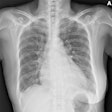Clinicians improved the symptoms of men with benign prostatic hyperplasia (BPH) using a less invasive interventional radiology treatment known as prostate artery embolization (PAE), according to a study presented on Monday at the Society of Interventional Radiology (SIR) meeting.
Lead researcher Dr. Sandeep Bagla, from Inova Alexandria Hospital in Virginia, and colleagues found that PAE was successful in a majority of patients, regardless of the size of BPH before the treatment.
PAE is less invasive and has fewer complications than other minimally invasive treatments, according to a statement from SIR. The treatment offers less risk, pain, and recovery time than traditional surgery, and the researchers said they are hopeful that further studies will confirm its effectiveness for BPH.
The study included 78 patients who underwent PAE for BPH. The patients were sorted into three groups based on size of the enlarged prostate: less than 50 cm3, 50 to 80 cm3, and greater than 80 cm3. Bagla and colleagues then evaluated the effectiveness of PAE in these patients at one, three, and six months after treatment.
Among the 78 subjects, 75 (96%) treatments were considered technically successful, with both blood vessels leading to the enlarged prostate blocked by PAE. The researchers reported symptom improvement and significantly improved quality of life in all three patient groups.
There was no difference in outcome among the three groups, and patients did not report a change in their sexual function.



















